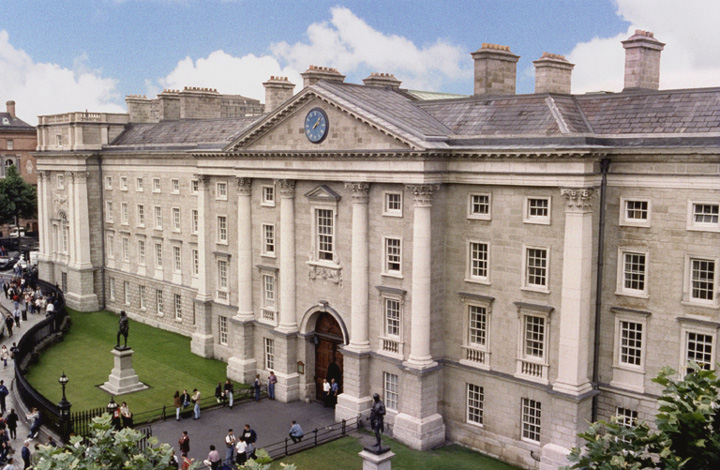Trinity is to turn the lawns outside its Front Gate into a wildflower meadow as a response to Ireland’s “biodiversity crisis”, after 90 per cent of voters backed the move in a poll on the issue.
Trinity announced the news on Twitter today, bringing to an end a public vote that gave more than 13,000 people a say in the decision to make the space more sustainable.
With the country in lockdown, planting for the meadow won’t start yet, but College said it will update the public “as circumstances allow”.
Trinity first announced in February that it would put the future of the two lawns – which make islands of the twin statues of Edmund Burke and Oliver Goldsmith – to a public, online vote.
At the time, John Parnell, Trinity’s senior dean and the chair of its grounds and gardens committee, wrote in an email to staff and students that “lawn-mowing, ground preparation and pesticide control can disturb important insects that feed and nest in the soil”.
“Planting wildflowers and minimizing interference can support biodiversity, provide a habitat for native insects and food for pollinators in the city centre”, Parnell said.
Although the area may end up looking a little messier, supporters of the idea believe it will be an important reminder to the public of what wild nature looks like.
This isn’t the first step Trinity has taken to improve the biodiversity of its campus – over the past year, Parnell wrote, it has converted 1,000 square metres of its campus to wildflower havens.
If the project gets the go-ahead, it will flower in spring and summer and be left untouched in winter.
“Even though the area outside Trinity may, on occasion, look less tidy, supporters of the idea say it will be an important indicator of what can be reasonably done in a formal setting whilst still maintaining the ‘look’ of the area”, Parnell wrote in the email.
Parnell told the Irish Times that changing the makeup of the space “will send out a strong signal that Trinity College Dublin is not bound by the past but engaged with the future”.







